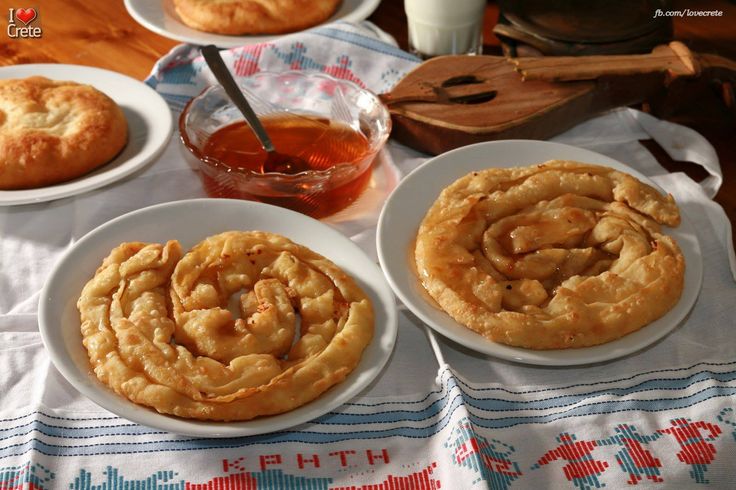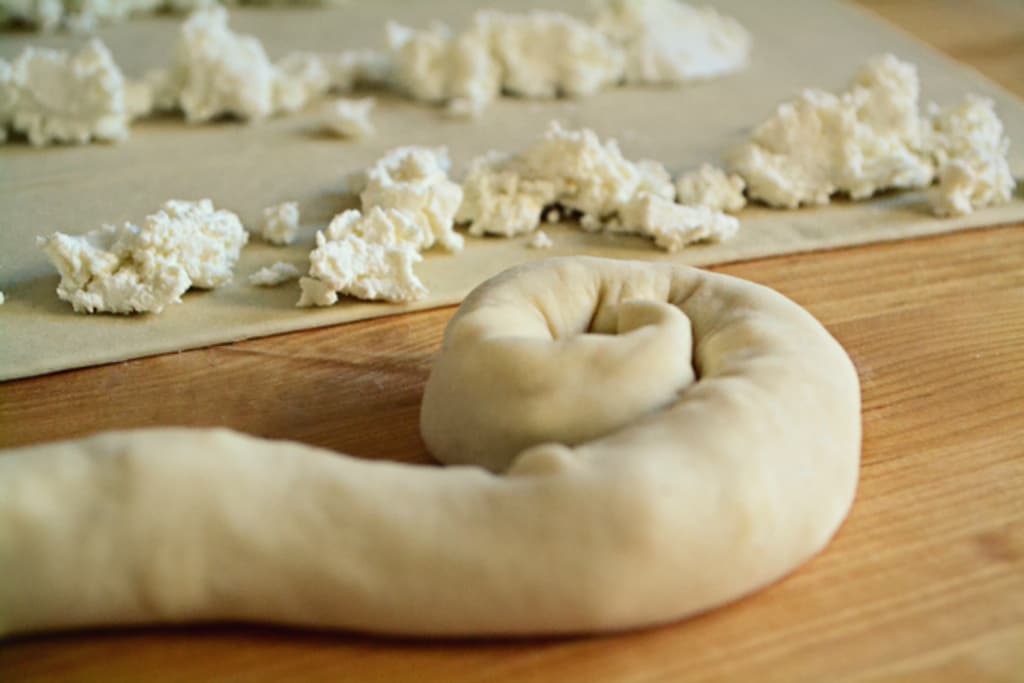Sarikopites Recipe: A Cretan Culinary Gem
When you think of Greek food, your mind may drift to moussaka, souvlaki, or a crisp village salad with chunks of creamy feta. But tucked away on the sun-drenched island of Crete, a quieter culinary treasure waits to be discovered: sarikopites. These delicate, spiral-shaped cheese pies are not only visually stunning, but they also represent the heart of Cretan tradition and hospitality. Their name, “sarikopites,” is derived from “sariki,” the traditional headscarf worn by Cretan men, which the spiral of the pastry resembles. This dish combines simplicity with rustic charm, made from just a few core ingredients but layered with cultural significance. In this article, we’ll dive into the story behind sarikopites, explore how to make them from scratch, and offer tips to recreate an authentic Cretan experience in your own kitchen.
A Bite of History
Crete, the largest of the Greek islands, has a cuisine shaped by centuries of conquest, trade, and agrarian life. Influences from Venetians, Ottomans, and Minoans can be tasted in every dish, but Cretan food has retained a strong identity through its reliance on local ingredients, handmade techniques, and a deep respect for the land. Sarikopites are one such dish. Traditionally made during Easter or special occasions, they are prepared using handmade phyllo dough and stuffed with local cheeses, especially mizithra or anthotyro, both fresh, slightly tangy, and wonderfully creamy. The pies are either fried or baked, then drizzled with honey for a savory-sweet experience that’s utterly addictive. Historically, sarikopites were a symbol of abundance. They were often made in large quantities and shared among friends, family, and neighbors. The spiral shape, resembling the headscarves worn during dances and festivals, carries symbolic value—celebrating continuity, unity, and resilience in the face of time.
What Makes Sarikopites Unique
Unlike other Greek cheese pies like tiropita or bougatsa, sarikopites stand out for their handmade approach and spiral design. Each pie is a small work of art, rolled, twisted, and coiled into shape by hand. The dough is traditionally stretched paper-thin, showcasing the skill of the cook. The filling is simple but bold, with local cheeses providing the main flavor. The texture is crispy on the outside and soft and cheesy on the inside, with occasional sweetness if honey is used as a topping. They can be made small and bite-sized, perfect for parties, or larger for a full meal. While many modern recipes use store-bought phyllo dough, traditionalists insist on making their own. This not only affects texture but also connects the cook with generations of Cretan women who’ve rolled dough on wooden boards while telling stories and sipping raki. It’s this human connection—hands, ingredients, history—that makes sarikopites more than just a snack.
Ingredients: The Building Blocks
To make traditional sarikopites, you’ll need simple ingredients that, when treated with care, yield incredible flavor. For the dough, use all-purpose flour, warm water, olive oil, a bit of vinegar, and salt. Some add a splash of raki for tradition and elasticity. For the filling, authentic mizithra or fresh ricotta is best. You can substitute with feta mixed with Greek yogurt if mizithra isn’t available. Honey is optional but highly recommended for drizzling at the end. For frying, high-quality olive oil is essential—not only for authenticity but for flavor. Here’s a basic ingredient list: 3 cups all-purpose flour, 1 tsp salt, 1 tbsp white vinegar or lemon juice, 2 tbsp olive oil (plus more for brushing), 1¼ cup warm water, 2 cups fresh mizithra or ricotta, honey for drizzling (optional), olive oil for frying.
Making the Dough from Scratch
Start by placing the flour in a large mixing bowl. Add salt and make a well in the center. Pour in the olive oil and vinegar. Gradually add warm water as you mix with your hands, kneading until a soft, elastic dough forms. This takes about 10 minutes of kneading. Once the dough is ready, divide it into small balls (about the size of a golf ball), cover them with a cloth, and let them rest for at least 30 minutes. This rest time allows the gluten to relax, making it easier to roll out later. After resting, roll each dough ball out on a lightly floured surface into a thin, long rectangle. Use a rolling pin or traditional dowel (called a veli) to stretch it thin—almost transparent but not torn. Don’t worry if they’re not perfectly shaped. The irregularity adds charm.
Crafting the Perfect Spiral
Once your phyllo sheet is ready, spread a generous spoonful of cheese mixture along one long edge. Leave a small border to avoid overflow. Gently roll the dough into a long rope, like a cigar. Then, coil the rope into a spiral shape, tucking the end underneath. Place each spiral on a floured surface and cover until ready to cook. If you’re baking instead of frying, brush the tops with olive oil. For frying, heat a deep skillet with olive oil and fry each spiral until golden brown on both sides. The dough will puff slightly and crisp beautifully, while the cheese melts inside. Drain them on paper towels to remove excess oil.
Baking vs. Frying: Choosing Your Style
Traditionally, sarikopites were fried, giving them a rich golden color and crispiness. However, baking has gained popularity for being lighter and easier for large batches. If baking, preheat the oven to 180°C (350°F) and place spirals on a parchment-lined tray. Brush them with olive oil and bake for 25–30 minutes or until golden. For extra flavor, drizzle with warm thyme honey once out of the oven. Fried pies are richer, crispier, and more indulgent, while baked ones are drier and better suited for topping with sauces or honey. You can even make a hybrid version—bake them halfway and finish with a quick fry to get the best of both textures.
Serving Suggestions and Variations
Sarikopites are often served as an appetizer or snack, but they can also be the centerpiece of a light lunch. Pair them with a crisp Cretan white wine or a shot of raki for authenticity. Serve warm, with a drizzle of honey or a sprinkle of powdered sugar for a sweet version. For savory lovers, top with sesame seeds before baking. You can also add herbs to the cheese filling—think mint, oregano, or dill—for extra depth. Some versions incorporate a touch of cinnamon into the dough or filling, nodding to Crete’s love of warm spices. You can even experiment with fillings—spinach and cheese, sweet pumpkin, or even mushroom for an earthy twist.
Tips for First-Time Makers
If you’re new to handmade phyllo, don’t worry. It’s more forgiving than it looks. The key is to roll the dough thin and keep it well-oiled to prevent drying out. Make sure to let the dough rest long enough so it stretches easily. Use a large, flat surface and flour it generously. When frying, make sure your oil is hot enough—about 180°C (350°F)—to avoid soggy pies. Don’t overcrowd the pan; fry in batches. Taste your cheese filling before using. If your cheese is too salty (like feta), you might want to mix it with unsalted ricotta or yogurt to balance it out. And finally, serve them fresh. Sarikopites lose their crispness if left out too long, although they can be reheated in the oven.
A Dish That Tells a Story
Sarikopites are more than just a recipe—they’re a link to the soul of Crete. They bring people together, blending labor with love and taste with tradition. Whether prepared for a family gathering or a quiet night in, these golden spirals carry the weight of memory and the lightness of fresh dough. They remind us that food isn’t only about nutrition—it’s about sharing, celebration, and continuity. Every bite connects you to the island’s hillsides dotted with olive trees, the blue sea lapping at fishing boats, and the warmth of a kitchen filled with laughter. Making sarikopites at home may take a little more time, but the reward is far more than the sum of its parts. It’s a taste of Crete, a slice of culture, and an act of preservation.
Storing and Reheating
If you’ve made a large batch, store leftovers in an airtight container in the fridge for up to 3 days. To reheat, use an oven or toaster oven to restore crispness. Avoid microwaving, as it will make the dough soggy. You can also freeze the unbaked spirals and bake them straight from frozen. Just add 5–7 minutes to the baking time. This makes sarikopites a great make-ahead option for parties or last-minute guests.
Final Thoughts
Cretan sarikopites offer a delightful culinary journey. From their humble ingredients to their artistic form, they’re a testament to the richness of Greek island life. Making them isn’t just about following a recipe—it’s about engaging in a ritual that’s been passed down for generations. Whether you enjoy them sweet or savory, fried or baked, one thing is certain: once you’ve tried them, they’ll become a permanent part of your table. So take your time, enjoy the process, and let these golden spirals transport you to the heart of Crete.












